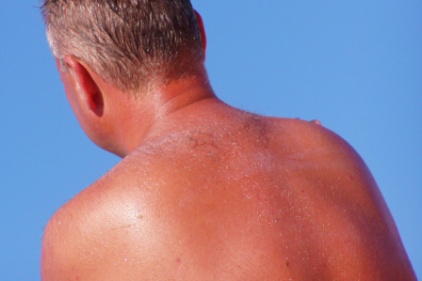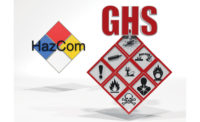How to read those new sunblock labels
UVA, UVB, Broad Spectrum – what does it all mean?

 When you’re at the drug store reaching for a sunscreen product, you may notice some changes on the labels.
When you’re at the drug store reaching for a sunscreen product, you may notice some changes on the labels.
Health experts recommend using sunscreen products that offer Broad Spectrum protection and have an Sun Protection Factor (SPF) of 30 or higher. Under the new labeling that was announced recently by the Food & Drug Administration (FDA), sunscreens that protect against both ultraviolet A (UVA) and ultraviolet B (UVB) rays can be labeled “Broad Spectrum.”
Both UVA and UVB radiation contribute to the sun’s damaging effects, which include sunburn, premature skin aging and skin cancer.
There are 3.5 million cases of skin cancer in over 2 million people each year, which is more than new cases of breast, prostate, lung and colon cancers combined. According to the American Cancer Society, melanoma incidence rates have been increasing for at least 30 years. From 2005 to 2009, incidence rates among whites increased by 2.8% per year.
What is Broad Spectrum?
Sunscreen products that meet the criteria for being called Broad Spectrum, and have an SPF of 15 or higher, may state that they reduce the risk of skin cancer and early skin aging, when used as directed.
Products that have SPF values between 2 and 14 may be labeled as Broad Spectrum if they protect against both UVA and UVB, but only products that are labeled both as Broad Spectrum with SPF values of 15 or higher can make the claim about lowering risk of skin cancer.
Any product that is not Broad Spectrum, or that is Broad Spectrum but has an SPF between 2 to 14, will be required to have a warning stating that the product has not been shown to help prevent skin cancer or early skin aging.
Preventable, yet common
“Despite the fact that skin cancer is largely preventable, it remains by far the most common type of cancer in the United States,” said Sandra Read, co-chair of the National Council on Skin Cancer Prevention.
Sunscreen should be applied liberally, and should be reapplied after swimming or excessive sweating. In addition, water resistance claims on the front label must indicate whether the sunscreen remains effective for 40 minutes or 80 minutes while swimming or sweating, based on standard testing. Sunscreens that are not water resistant must include a direction instructing consumers to use a water resistant sunscreen if swimming or sweating.
While generous sunscreen usage is an important way to protect your skin from the sun, there are additional sun safety measures you can take:
- Avoid sun burns, intentional tanning, and use of tanning beds;
- Wear sun-protective clothing, a wide-brimmed hat, and UV-blocking sunglasses;
- Seek the shade, especially between 10 AM and 4 PM;
- Use extra caution near water, snow, and sand;
- Get vitamin D safely through food and supplements.
For more information on how to protect your self from skin cancer, visit the National Council’s site at www.SkinCancerPrevention.org. The National Council on Skin Cancer Prevention is the united voice of more than 45 organizations, associations, and agencies dedicated to reducing skin cancer morbidity and mortality in the United States. Council members represent some of the nation’s premier physicians, researchers, clinicians and advocates for melanoma and skin cancer prevention.
Looking for a reprint of this article?
From high-res PDFs to custom plaques, order your copy today!




